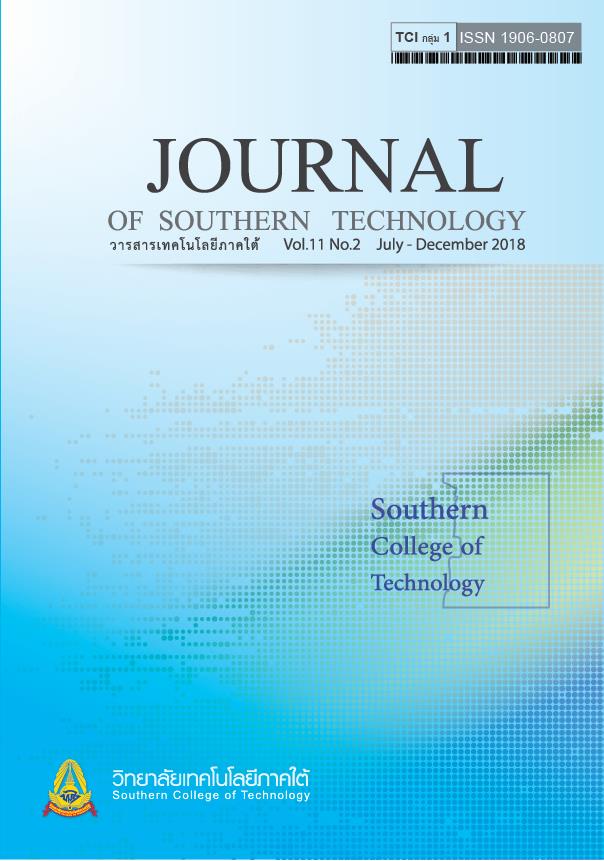Development of Application Prototype for System of Rice Intensification with Augmented Reality Technology
Main Article Content
Abstract
The objectives of this research were to develop a prototype application for the System of Rice Intensification using Augmented Reality Technology and to examine the satisfaction of the Developed Application. The growth of rice divided into four stages: 1. Seedling stage 2. Tillering stage 3. Booting stage and 4. Milky and ripening stage, all of these are produced in form of three Dimension models that can use with Android-based smartphones or tablets. The user satisfaction was surveyed from 30 participation consist of 3 rice mill officers and 27 students in the Bachelor of Science Program in Home Economics from Suan Dusit University. The satisfaction result showed the highest level of overall users’ satisfaction after accessing the developed Application ( =3.87, S.D.=0.33); the satisfaction with all of component at highest level (
=3.91, S.D.=0.29); the satisfaction with the content (
=3.88, S.D.=0.32); the satisfaction with the developed application performance and qualification (
=3.86 S.D.=0.34) and the satisfaction with the designed (
=3.85, S.D.=0.35), respectively. The development of the system of rice intensification using the application prototype for system of rice intensification with augmented reality technology indicated that the content is clear and easy to understand, the application uses the appropriate colors, the application process speed and its component designed were satisfied.
Article Details
-
Authors must agree to the journal publication rules and allow the editors to edit the manuscripts for publication.
-
Author’s right belongs to the author but Journal of Southern Technology holds the right of first publication and thus allow readers to use the article for the purpose of education but not commercial.
References
Hsu, T.C. (2017). Learning English with augmented reality: do learning styles matter?. Computers & Education, 106, 137-149.
Kajonwongwatana, A. (2009). In-depth Interview, Retrieved July 13, 2016, from https://www.gotoknow.org/posts/285191[in Thai]
Kampipak, W. (2015). What is Augmented Reality or AR?, retrieved July 21, 2016, from https://www.ubu.ac.th/blog/wichit-132[in Thai]
Lungsiripiyakul, A. (2014). VR/AR and Learning and Teaching, Retrieved July 21, 2016, from https://www.think.co.th/ar/author/ admin [in Thai]
Mesuwan, W. (2013). Design Applications. Retrieved July 6, 2016, from https://wiwatmee.blogspot.com/2012/08/Blog-post_28.html [in Thai]
Norraji, M. F., & Sunar, M. S. (2015). wARna-Mobile-based Augmented Reality Coloring Book. International Conference on Interactive Digital Media (ICIDM) (4th), 1-5 December 2015 Bandung-Indonesia. IEEE.
Siripituk, N. (2008). SDLC System, Retrieved July 21, 2016, from https://www.gotoknow.org/posts/25351 [in Thai]
Wang, R., Geng., Z., Zhang, Z., Pei R., & Meny, X., (2017). Auto stereoscopic augmented reality visualization for depth perception in endoscopic surgery. Displays, 48, 50-60.
Wongmun, S. (2014). AR Technology and Applications, Retrieved July 6 2016, from https://supachai287.wordpress.com/2014/06/01/augmented-reality-aurasma. [in Thai]

